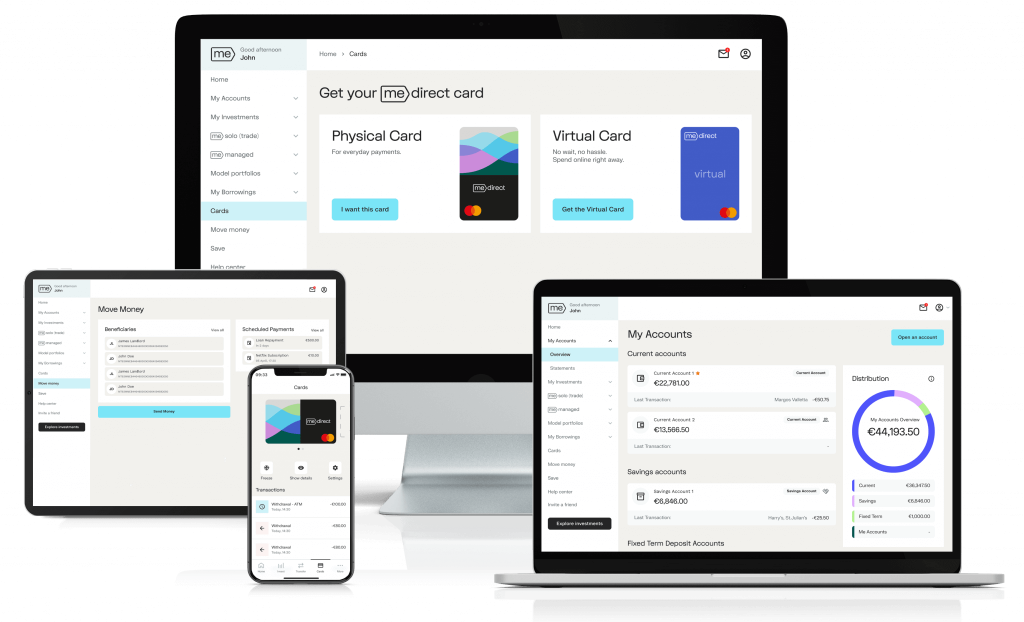A field guide to the key risks for investors in stocks, bonds, and yes, cash.
Academics and finance professionals sometimes refer to the “risk-free rate of return” as a benchmark; in this context, the risk-free rate is the yield on cash assets, where you’re guaranteed stability of principal even as you pick up a slight (these days very slight) return.
But despite the ubiquity of the term “risk-free rate,” no investment is 100% free of every possible risk. Even as assets parked in certificates of deposit and online savings banks won’t fluctuate in value, the investor who parks too much in them can face other types of risks, including inflation risk and shortfall risk. Meanwhile, stocks have a much higher level of risk in the conventional sense, in that you could lose all your money and never recover it. At the same time, an investor who buys and holds a mostly stock portfolio generally faces less of a shortfall risk than the investor who parked the same amount in cash over several decades.
Because each and every investment type entails at least some type of risk, investors would do well to make sure they understand the key risk factors associated with each asset class, build portfolios well diversified across asset classes (and, in turn, risk factors), and don’t take more risk than they can afford to, given their time horizons.
Here’s an overview of some of the key risks associated with each asset class. Note that some of these risks cut across asset classes–for example, valuation or price risk is primarily associated with holding stocks, but it can affect bond investors, too.
Cash and Cashlike Investments
Inflation Risk: One of the big risks for investors in fixed-rate securities–especially ultra-low-yielding securities like cash–is that their investments may not earn enough to keep up with inflation over time. That’s certainly a big risk today: Cash yields are mostly all under 1% right now, but the most recent reading of the Consumer Price Index was up more than 7% from the previous year. That means that investors who are holding too much cash today aren’t even preserving their purchasing power. That’s not such a big deal for expenditures that are close at hand, but the longer the holding period, the more inflation risk should be a concern.
Shortfall Risk: Investors can fall short of their financial goals for many reasons–key among them is undersaving. But if you’re saving for a long-term goal, holding too much in investments with little to no short-term volatility–but commensurately low returns–can help exacerbate shortfall risk.
Bonds
Interest-Rate Risk: Interest-rate risk is the chance that interest rates will increase, thereby pushing down the prices of already-existing bonds with lower yields attached to them. The longer the duration of a bond portfolio, the more vulnerable it will tend to be to interest-rate increases. That’s because not only will investors in the long-duration bond be stuck holding a lower-yielding asset when rates increase, but they will be forced to hold on to it for a longer period of time, increasing their opportunity cost. Investors can mitigate interest-rate risk somewhat by holding individual bonds until maturity, but it can be difficult for smaller investors to build well-diversified portfolios composed of individual bonds. Investors can use duration to help assess how much interest-rate sensitivity is embedded in their bond funds.
Credit Risk: Credit risk is the possibility that a bond issuer will be unable to pay its debts. To help make up for this risk, bond issuers with lower credit qualities typically must pay their bondholders higher yields than high-quality firms issuing bonds of the same duration. Default risk isn’t the only reason that holders of lower-quality credits can run into trouble: In periods of economic hardship, such as the 2008 financial crisis and March 2020, investors often sell out of low-quality bonds pre-emptively, thereby depressing their prices.
Inflation: As with cash, investors earning a fixed yield on their bond investments will see a decline in their real, take-home yields as prices increase. Treasury Inflation-Protected Securities and I Bonds include an inflation adjustment on top of the yields the bonds offer, thereby effectively removing the risk of unexpected inflation shocks for bondholders.
Reinvestment Risk: Reinvestment risk generally means that the holder of a security will be forced to reinvest in a less attractive security or environment than the one he or she had originally. For bondholders, this is the risk that bond issuers will refinance their obligations in an effort to lower their interest payments, thereby leaving the bondholder to reinvest the money in a lower-yielding environment.
Foreign Bonds
Currency Risk: Holders of foreign bonds face all of the risks outlined above, but they may also face a few additional risk factors. One of the most notable is currency risk–the chance that the currency in which the bond is denominated falls relative to the investor’s home currency, thereby reducing or even wiping out any appreciation from the bond itself over the investor’s holding period. Some foreign-bond funds hedge their currency exposures to effectively wipe out the effects of currency fluctuations on returns, thereby reducing volatility and making returns more bondlike.
Geopolitical Risk: Holders of foreign bonds may also see their bonds’ prices drop because of geopolitical concerns–for example, political unrest in the country in which an issuer is domiciled. Even if investors in such bonds don’t believe that a default is imminent, other investors may demand a higher yield from the bonds to make the risks worth taking, thereby driving down the bonds’ prices.
U.S. Stocks
Valuation Risk: Valuation risk can apply to purchasers of all assets and means simply that by overpaying for an asset, the investor will earn an inadequate return–or even a loss–over his or her holding period. Valuation risk can be a key risk for equity investors, which is one reason Morningstar’s equity analysts focus heavily on determining companies’ fair values.
Fundamental Risk: This refers to the risk that companies’ business fundamentals–their revenues and profitability, for example–could fall short of investor expectations, thereby knocking down the value of their stocks.
Economic Risk: This is the risk that the economy at large could turn down, affecting business fundamentals across industries and companies. Companies that operate in economically sensitive businesses–manufacturing, basic-materials, and energy firms, for example–tend to be particularly sensitive to the strength and direction of the economy. On the flip side, companies that sell products that people need no matter what, such as makers of toothpaste and pharmaceuticals, tend to be less sensitive to the strength of the overall economy.
Liquidity Risk: This risk can apply to many asset types, not just stocks. In general, it means that there’s not a ready market for a given asset, so an investor may not be able to unload the security when she wants–or at the price she would like it to fetch. Liquidity tends to be a particularly big issue for very-small-company stocks, but it can also apply to some bond types.
Foreign Stocks
Currency Risk: As with foreign bonds, this is the risk that currency losses will reduce any gains, or magnify any losses, associated with the underlying investments. While foreign-currency fluctuations can have a meaningful impact on the returns that U.S. investors earn by investing in foreign bonds, currency fluctuations generally play a smaller, but still significant, role in foreign-stock returns.
Geopolitical Risk: Geopolitical risk can take a toll on foreign equities, just as it can with bonds, as investors will tend to jettison the securities from countries where there’s military action or economic or political unrest. For example, Russian equities have dropped so far in 2022, owing to its impending military actions in Ukraine as well as the threat of further economic sanctions.
Commodities
Economic Risk: Commodities-tracking investments are often put forth as good hedges against inflation, because commodities prices are often rising just as consumers are having to pay higher prices for goods. The flip side is also true, however: When economic growth and consumption are slow, commodities prices often lag.
Contango: Because most commodities-tracking investments use derivatives rather than investing directly in–and taking possession of–commodities, there’s the risk that the price of the futures contracts won’t directly match the spot prices of the actual commodities. In the case of “contango,” the price of the futures contracts for a given commodity are higher than the spot price.
Morningstar Disclaimers:
The opinions, information, data, and analyses presented herein do not constitute investment advice; are provided as of the date written; and are subject to change without notice. Every effort has been made to ensure the accuracy of the information provided, but Morningstar makes no warranty, express or implied regarding such information. The information presented herein will be deemed to be superseded by any subsequent versions of this document. Except as otherwise required by law, Morningstar, Inc or its subsidiaries shall not be responsible for any trading decisions, damages or losses resulting from, or related to, the information, data, analyses or opinions or their use. Past performance is not a guide to future returns. The value of investments may go down as well as up and an investor may not get back the amount invested. Reference to any specific security is not a recommendation to buy or sell that security. It is important to note that investments in securities involve risk, including as a result of market and general economic conditions, and will not always be profitable. Indexes are unmanaged and not available for direct investment.
This commentary may contain certain forward-looking statements. We use words such as “expects”, “anticipates”, “believes”, “estimates”, “forecasts”, and similar expressions to identify forward-looking statements. Such forward-looking statements involve known and unknown risks, uncertainties and other factors which may cause the actual results to differ materially and/or substantially from any future results, performance or achievements expressed or implied by those projected in the forward-looking statements for any reason.
The Report and its contents are not directed to, or intended for distribution to or use by, any person or entity who is a citizen or resident of or located in any locality, state, country or other jurisdiction where such distribution, publication, availability or use would be contrary to law or regulation or which would subject Morningstar or its subsidiaries or affiliates to any registration or licensing requirements in such jurisdiction.
MeDirect Disclaimers:
This information has been accurately reproduced, as received from Morningstar, Inc. No information has been omitted which would render the reproduced information inaccurate or misleading. This information is being distributed by MeDirect Bank (Malta) plc to its customers. The information contained in this document is for general information purposes only and is not intended to provide legal or other professional advice nor does it commit MeDirect Bank (Malta) plc to any obligation whatsoever. The information available in this document is not intended to be a suggestion, recommendation or solicitation to buy, hold or sell, any securities and is not guaranteed as to accuracy or completeness.
The financial instruments discussed in the document may not be suitable for all investors and investors must make their own informed decisions and seek their own advice regarding the appropriateness of investing in financial instruments or implementing strategies discussed herein.
If you invest in this product you may lose some or all of the money you invest. The value of your investment may go down as well as up. A commission or sales fee may be charged at the time of the initial purchase for an investment. Any income you get from this investment may go down as well as up. This product may be affected by changes in currency exchange rate movements thereby affecting your investment return therefrom. Any decision to invest should always be based upon the details contained in the Prospectus and Key Investor Information Document (KIID), which may be obtained from MeDirect Bank (Malta) plc.





